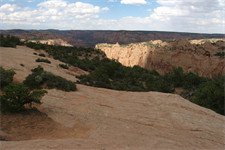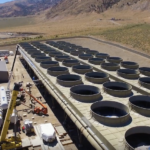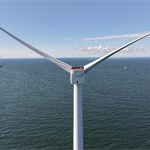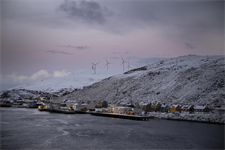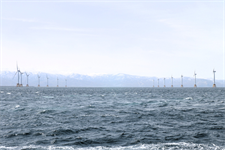Exclusive: Avangrid-Navajo renewables venture could ‘change narrative’ for indigenous lands
Energy Disrupter
.png)
The pair signed a memorandum of understanding (MoU) in April to co-develop renewable projects in the Navajo Nation, a reservation covering 71,000 km2 in New Mexico, Arizona and Utah.
The partners explained that they aim to use revenue generated by the future wind and solar projects to help Navajo tribal communities living in the nation.
Arash Moalemi, deputy general manager at the NTUA, told Windpower Monthly that the program could help reverse a decades-long situation where energy developments like coal plants on historic Native American Navajo lands were owned by outsiders and used to power large cities in the region like Los Angeles and Las Vegas without providing any energy to Navajo communities themselves.
“We’re trying to change that narrative whereby the NTUA will be owners of these plants. Every project that we look at, we have to be 51% majority owners of the project. Because we want to exercise our sovereignty and say, you know what, this is our project on our land. We have the right to make decisions, important decisions on these projects. And Avangrid has supported that objective from the Navajo nation’s side,” he said.
Since signing the MOU, potential projects have been scoped out for suitability — among them is a large wind energy project at the Big Boquillas ranch in Arizona.
“The Big Boquillas Ranch is a great opportunity for us. It’s a huge land holding and has good resources for the state of Arizona. It’s well positioned in the state to reach multiple markets,” Tyler Hoffbuhr, senior manager of business development at Avangrid, said.
Hoffbuhr added that the project was still in the early stages of development but was expected to be “several hundred megawatts plus” in terms of its potential capacity.
Now listen: Can the wind industry and indigenous peoples coexist?
Once wind and solar projects are developed through the joint venture, Moalemi expects them to provide funds that can be used to help power communities on the Navajo nation, including those that are without electricity.
“We still have about 14,000 homes without electricity on the power grid. Our objective is to connect every person on Navajo. We build on Navajo, we create jobs on Navajo, we create sales tax revenue for the Navajo Nation government. We produce energy on the nation, we sell that power off the nation, and we bring the revenue back onto the nation to help power up the homes on the Navajo Nation,” Moalemi said.
He added that this model could help provide an alternative to the prevailing situation in the US where collaborative efforts between energy developers and Native American communities are rare due to a long history of trauma brought by the impact of outsiders on those communities.
“This relationship is a great opportunity and we feel comfortable and protected,” Moalemi said. “We think that both sides are getting benefits from the relationship. And we hope that this can serve as a kind of case study for other tribal nations in how to approach these types of relationships and how to set them up so you can get that trust back and you can see that this will help create benefits for the tribe itself.”

